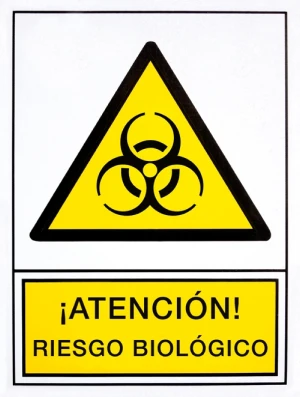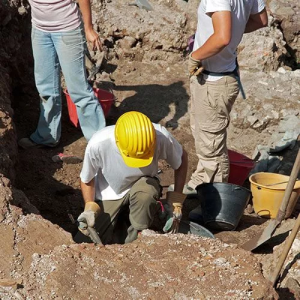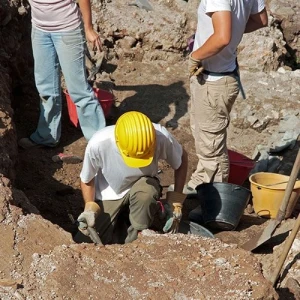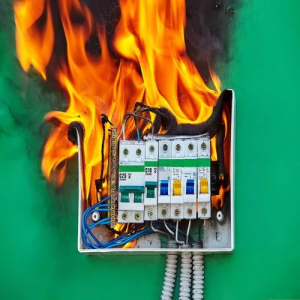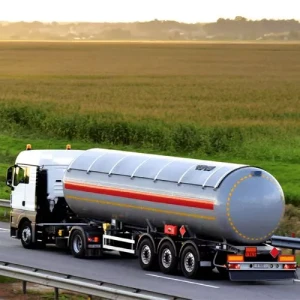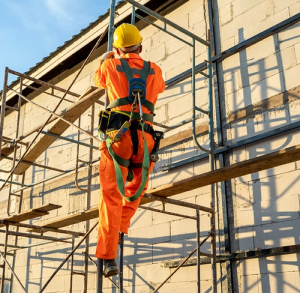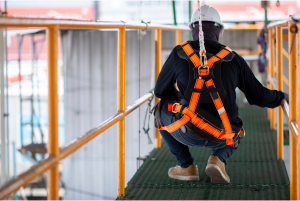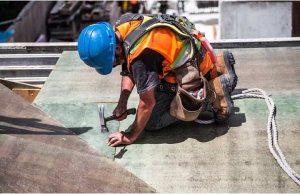Please note: Our phone service will be undergoing maintenance from May 8 to May 10, and you may experience delays in reaching us by phone. During this period, the best way to contact us is via email at
info@HAZWOPER-OSHA.com.
- HAZWOPER Training (29 CFR 1910.120)
- OSHA 10 & 30 Hour Outreach Training
- Competent Person Training
- OSHA Construction Safety Training Series
- OSHA General Industry Safety Training Series
- Hydrogen Sulfide (H2S) Training
- Ammonia Refrigeration Training
- Mold Inspection & Remediation Certification
- NFPA 70E Electrical & Arc Flash Safety
- Hazmat Training: DOT, IATA, IMDG Transportation
- CDL Entry-Level Driver Training (ELDT)
- HIPAA Training
- Hazard Communication (HazCom) & GHS
- Lithium Battery Shipping Training
- RCRA Hazardous Waste Management
- OSHA Safety Training in Spanish
- Ergonomics Training
- NYC Site Safety Training (NY SST) Courses
- Healthcare Industry Training
HAZWOPER (e) Training
40 Hour(s)
View Details
Enroll Now
40 Hour(s)
View Details
Enroll Now
40 Hour(s)
View Details
Enroll Now
24 Hour(s)
View Details
Enroll Now
8 Hour(s)
View Details
Enroll Now
8 Hour(s)
View Details
Enroll Now
8 Hour(s)
View Details
Enroll Now
8 Hour(s)
View Details
Enroll Now
40 Hour(s)
View Details
Enroll Now
HAZWOPER (p) Training
24 Hour(s)
View Details
Enroll Now
8 Hour(s)
View Details
Enroll Now
HAZWOPER (q) Training
8 Hour(s)
View Details
Enroll Now
Construction Industry
10 Hour(s)
View Details
Enroll Now
30 Hour(s)
View Details
Enroll Now
10 Hour(s)
View Details
Enroll Now
30 Hour(s)
View Details
Enroll Now
General Industry
10 Hour(s)
View Details
Enroll Now
10 Hour(s)
View Details
Enroll Now
3 Hour(s)
View Details
Enroll Now
3 Hour(s)
View Details
Enroll Now
5 Hour(s)
View Details
Enroll Now
8 Hour(s)
View Details
Enroll Now
3 Hour(s)
View Details
Enroll Now
8 Hour(s)
View Details
Enroll Now
3 Hour(s)
View Details
Enroll Now
3 Hour(s)
View Details
Enroll Now
3 Hour(s)
View Details
Enroll Now
3 Hour(s)
View Details
Enroll Now
3 Hour(s)
View Details
Enroll Now
8 Hour(s)
View Details
Enroll Now
2 Hour(s)
View Details
Enroll Now
2 Hour(s)
View Details
Enroll Now
2 Hour(s)
View Details
Enroll Now
2 Hour(s)
View Details
Enroll Now
4 Hour(s)
View Details
Enroll Now
2 Hour(s)
View Details
Enroll Now
1 Hour(s)
View Details
Enroll Now
5 Hour(s)
View Details
Enroll Now
8 Hour(s)
View Details
Enroll Now
3 Hour(s)
View Details
Enroll Now
2 Hour(s)
View Details
Enroll Now
2 Hour(s)
View Details
Enroll Now
2 Hour(s)
View Details
Enroll Now
2 Hour(s)
View Details
Enroll Now
1 Hour(s)
View Details
Enroll Now
2 Hour(s)
View Details
Enroll Now
2 Hour(s)
View Details
Enroll Now
2 Hour(s)
View Details
Enroll Now
2 Hour(s)
View Details
Enroll Now
4 Hour(s)
View Details
Enroll Now
2 Hour(s)
View Details
Enroll Now
2 Hour(s)
View Details
Enroll Now
2 Hour(s)
View Details
Enroll Now
1 Hour(s)
View Details
Enroll Now
1 Hour(s)
View Details
Enroll Now
3 Hour(s)
View Details
Enroll Now
3 Hour(s)
View Details
Enroll Now
2 Hour(s)
View Details
Enroll Now
2 Hour(s)
View Details
Enroll Now
2 Hour(s)
View Details
Enroll Now
3 Hour(s)
View Details
Enroll Now
3 Hour(s)
View Details
Enroll Now
Explore All
Explore All
Explore All
10 Hour(s)
View Details
Enroll Now
4 Hour(s)
View Details
Enroll Now
2 Hour(s)
View Details
Enroll Now
2 Hour(s)
View Details
Enroll Now
2 Hour(s)
View Details
Enroll Now
2 Hour(s)
View Details
Enroll Now
2 Hour(s)
View Details
Enroll Now
2 Hour(s)
View Details
Enroll Now
2 Hour(s)
View Details
Enroll Now
2 Hour(s)
View Details
Enroll Now
3 Hour(s)
View Details
Enroll Now
3 Hour(s)
View Details
Enroll Now
3 Hour(s)
View Details
Enroll Now
3 Hour(s)
View Details
Enroll Now
5 Hour(s)
View Details
Enroll Now
12 Hour(s)
View Details
Enroll Now
15 Hour(s)
View Details
Enroll Now
13 Hour(s)
View Details
Enroll Now
6 Hour(s)
View Details
Enroll Now
5 Hour(s)
View Details
Enroll Now
2 Hour(s)
View Details
Enroll Now
Explore All
4 Hour(s)
View Details
Enroll Now
4 Hour(s)
View Details
Enroll Now
40 Hour(s)
View Details
Enroll Now
3 Hour(s)
View Details
Enroll Now
1 Hour(s)
View Details
Enroll Now
2 Hour(s)
View Details
Enroll Now
1 Hour(s)
View Details
Enroll Now
2 Hour(s)
View Details
Enroll Now
1 Hour(s)
View Details
Enroll Now
40 Hour(s)
View Details
Enroll Now
8 Hour(s)
View Details
Enroll Now
4 Hour(s)
View Details
Enroll Now
2 Hour(s)
View Details
Enroll Now
Explore All
Comprehensive Corporate Training
We aim to elevate the personal and professional growth of your employees through our corporate training programs, which can be conducted either in a one-on-one or group format, and are facilitated by experienced instructors.
Our range of corporate training courses comprises compliance training, technical skills training, soft skills training, and onboarding and orientation.
Our corporate training solutions offer several advantages such as cost-effectiveness, personalized customization, comprehensive tracking and reporting features, and a pay-as-you-go option.
- Home
- Online Courses
- HAZWOPER Training (29 CFR 1910.120)
- HAZWOPER (e) Training
- OSHA 40 Hour HAZWOPER Training
- CAL/OSHA 40 Hour HAZWOPER Training
- OSHA 40 Hour HAZWOPER Training - Spanish
- OSHA 24 Hour HAZWOPER Training
- OSHA 8 Hour HAZWOPER Refresher Training
- OSHA 8 Hour HAZWOPER Supervisor Training
- OSHA 8 Hour HAZWOPER Supervisor Refresher Training
- OSHA 8-Hour HAZWOPER and Safe Ammonia Handling Refresher Training
- OSHA HAZWOPER and RCRA Hazardous Waste Management Technician Safety Training
- HAZWOPER (p) Training
- HAZWOPER (q) Training
- HAZWOPER (e) Training
- OSHA 10 & 30 Hour Outreach Training
- Construction Industry
- General Industry
- Competent Person Training
- OSHA Competent Person for Excavation, Trenching and Shoring Training
- OSHA Competent Person for Excavation, Trenching, and Shoring - Spanish
- OSHA Scaffolding Erection and Inspection Training for Competent Person
- OSHA Competent Person for Fall Protection Training
- OSHA Competent Person for Fall Protection Refresher Training
- OSHA Competent Person for Silica Training
- OSHA Construction Safety Training Series
- OSHA Competent Person for Excavation, Trenching and Shoring Training
- OSHA Confined Space Awareness Training
- OSHA Lead Awareness Training
- OSHA Asbestos Awareness Training
- OSHA Hydrogen Sulfide Awareness Training
- OSHA Competent Person for Silica Training
- OSHA Silica Awareness Training
- OSHA Hexavalent Chromium Awareness Training
- OSHA Scaffolding Safety Training
- OSHA Aerial - Scissor and Boom Lift Safety Training
- OSHA Forklift Safety Training
- OSHA Hand and Power Tools Safety Training
- OSHA Welding, Cutting, and Brazing for Construction Training
- OSHA Scaffolding Erection and Inspection Training for Competent Person
- OSHA Competent Person for Fall Protection Training
- OSHA Competent Person for Fall Protection Refresher Training
- OSHA Ladder Safety Training
- Drug and Alcohol Abuse Prevention Training for Construction Workers
- OSHA General Industry Safety Training Series
- OSHA Bloodborne Pathogens Training
- OSHA Fire Safety Training
- OSHA Lockout Tagout (LOTO) Training
- OSHA Personal Protective Equipment Training
- OSHA Process Safety Management Training
- OSHA Aerial and Scissor Lift Safety Training
- OSHA Scaffolding Safety Training
- OSHA Forklift Safety Training
- OSHA Machine Guarding Safety Training
- OSHA Emergency Action Plans Training
- OSHA 300 Recordkeeping and Reporting Training
- OSHA Incident Investigation Training
- OSHA Job Hazard Analysis Training
- OSHA Lead Awareness Training
- OSHA Asbestos Awareness Training
- OSHA Hexavalent Chromium Awareness Training
- OSHA Silica Awareness Training
- OSHA Ladder Safety Training
- Hydrogen Sulfide (H2S) Training
- Ammonia Refrigeration Training
- Mold Inspection & Remediation Certification
- NFPA 70E Electrical & Arc Flash Safety
- Hazmat Training: DOT, IATA, IMDG Transportation
- 10 Hour Advanced General Awareness Training
- 4 Hour General Awareness Training
- Hazardous Waste Manifest Training
- DOT Training: The Hazmat Table
- DOT Training: Shipping Papers
- DOT Training: Packaging
- DOT Training: Markings
- DOT Training: Labeling
- DOT Training: Placarding
- DOT Training: Security Awareness
- DOT Hazmat Carrier Requirements: Highway
- DOT Hazmat Carrier Requirements: Air/IATA
- DOT Hazmat Carrier Requirements: Rail
- DOT Hazmat Carrier Requirements: Vessel
- CDL Entry-Level Driver Training (ELDT)
- CDL Entry Level Driver Training (ELDT) - HAZMAT (H) Endorsement
- CDL Entry Level Driver Training (ELDT) – Class B to Class A Upgrade
- CDL Entry Level Driver Training (ELDT) – Class A
- CDL Entry Level Driver Training (ELDT) - Class B
- CDL Entry Level Driver Training (ELDT) – Passenger (P) Endorsement
- CDL Entry Level Driver Training (ELDT) – School Bus (S) Endorsement
- HIPAA Training
- Hazard Communication (HazCom) & GHS
- Lithium Battery Shipping Training
- RCRA Hazardous Waste Management
- OSHA Safety Training in Spanish
- Ergonomics Training
- NYC Site Safety Training (NY SST) Courses
- Healthcare Industry Training
- HAZWOPER Training (29 CFR 1910.120)
- AR/VR
- Corporate Training
- Contact Us
- OSHA Regulations by State
- Verify Certificate
- Log In
- Register
- Safety Store
- Get Started


